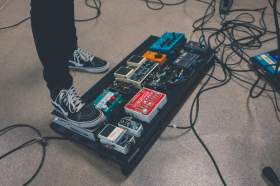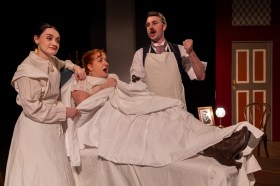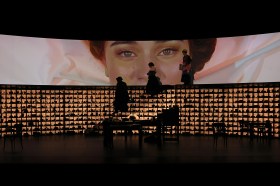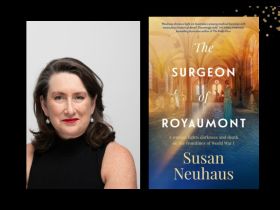Mike Parr Close the Concentration Camps (2002)
Anne Marsh’s Performance_Ritual_Document offers an overview of Australian performance art practices. Marsh is particularly interested in body art and performance works which contain ritualistic or shamanistic elements and observes that most audiences only ever experience these artworks through their documentation. She proceeds with a discussion of the more recent practice of creating performances that are never performed to an audience and are staged purely to be exhibited as documentation.
In the third chapter, Marsh discusses Jackson Pollock’s work and persona from the perspective of performance, which makes particularly interesting reading. Marsh calls into question any clear distinctions that may be drawn between modernism and postmodernism. Marsh points to Amelia Jones’ critique of Pollock as a bridge between modernism and postmodernism: ‘the once existentialist hero is suddenly self-reflective, performative and post-structuralist’ says Marsh.
Relational aesthetics has enjoyed such great popularity over the past decade that Marsh’s scepticism of the theory is refreshing. She describes Nicolas Bourriaud’s seminal text as ‘manifesto-like’ and goes on to warn that despite the relief artists may feel in greeting the return of idealism, utopias and the avant-garde, to accept this revival without criticism is problematic. Marsh argues that this return to modernist ideals is a repression of decades of critical analysis and that it is a forecast of cultural amnesia.
According to Marsh, video and performance art have developed and influenced each other. With recent advances in video and networking technology, artists are able to broadcast their performances as live video feeds via the internet. Mike Parr’s Close the Concentration Camps (2002) is mentioned, in which Parr brands the word ‘alien’ on his leg and has his lips, eyes and ears sewn together. The performance was screened via webcast for its six hour duration. For Marsh, the webcast is a ‘performative medium’, distinct from live performance, but one that is able to engage the audience in a similar manner despite their distance from the performer. It is able to ‘enhance the feeling of liveness’ and brings the action closer to the viewer.
Marsh says that these webcast performances can interrogate and expand electronic media. She doesn’t, however, mention the internet as an artistic medium in itself, merely as a surveillance tool or a distraction.
Performance_Ritual_Document’s greatest strength is the detailed documentation of contemporary Australian performance artworks. At times, the writing becomes too didactic and Marsh’s own contention becomes lost among the discussion of other theoretical viewpoints. Because of the even handed manner in which Marsh evaluates these different theories the book distinguishes itself more as a history of performance art than as a work directly engaged with the contemporary practices we see around us.
Rating: 3 out of 5 starsPerformance_Ritual_Document
By Anne Marsh
Semi-hardcover
272 pages
RRP $89.95
ISBN: 9781921394973
Macmillan Art Publishing





